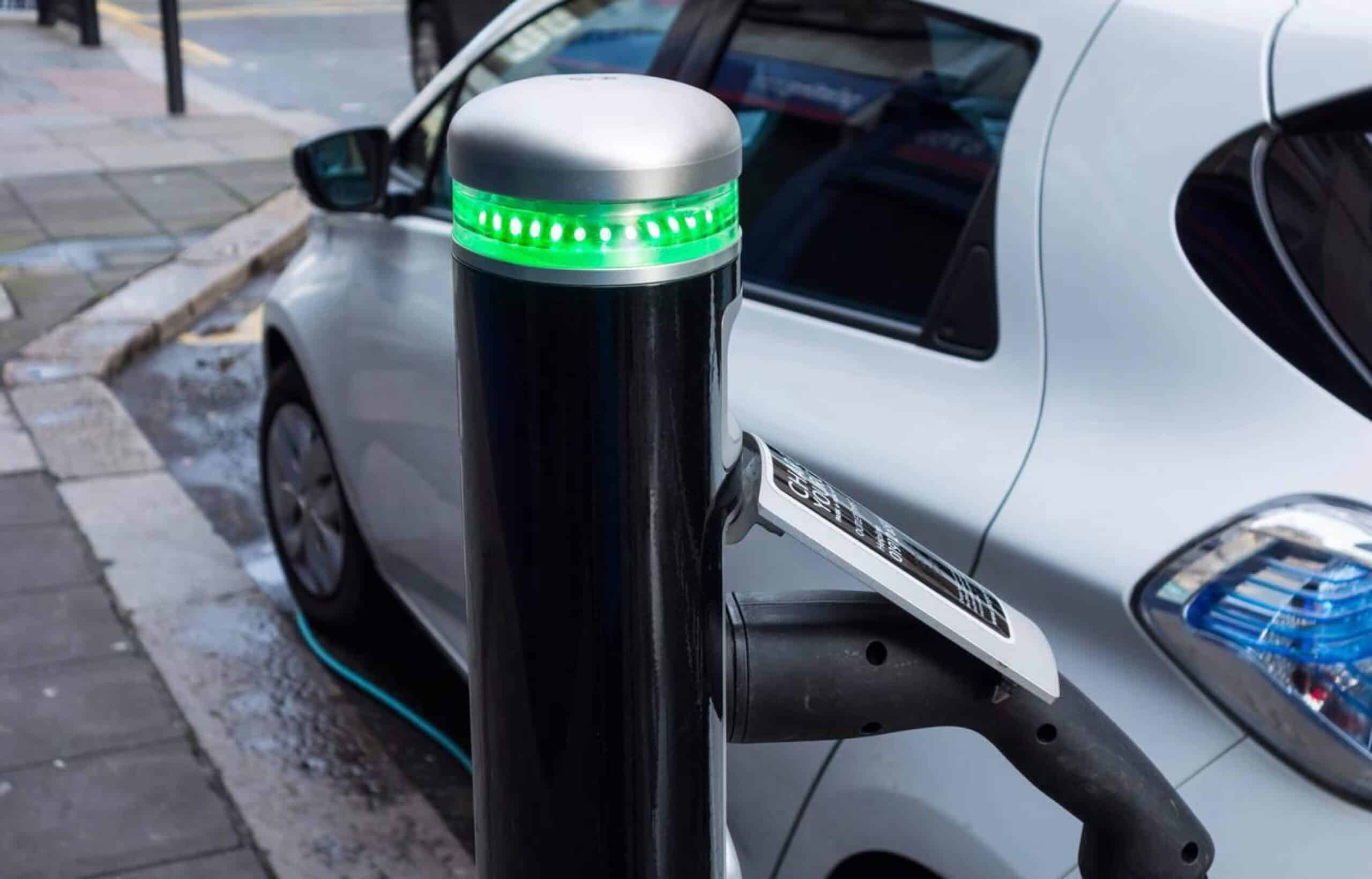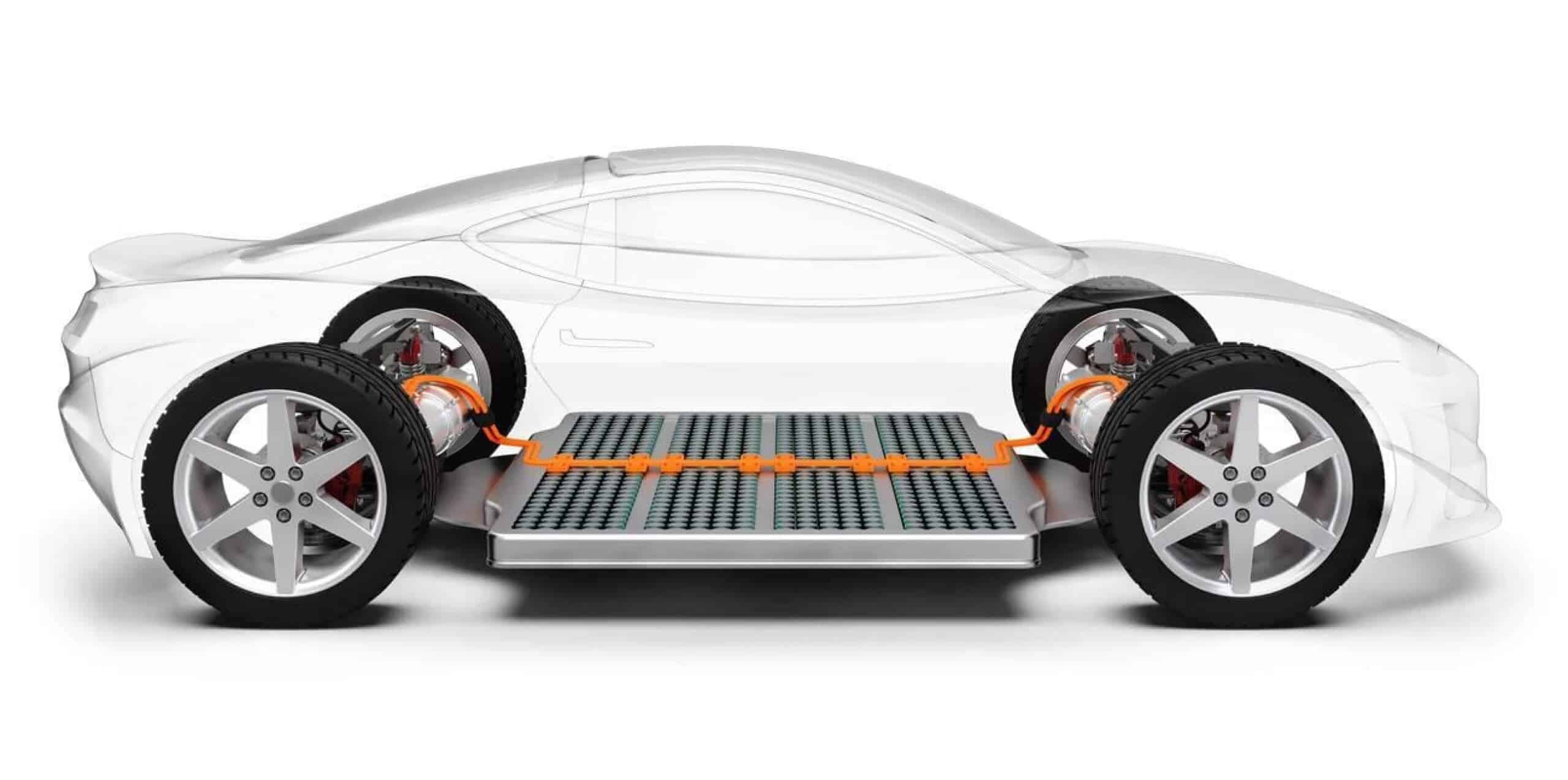Looking back, in the past we only relied on cars with gas-powered engines whenever we had to travel somewhere. The idea of a vehicle running on electricity without using any fuel seemed unbelievable, like something out of a sci-fi movie. But over time, things started changing and new ideas emerged, eventually leading to the development of electric vehicles (EVs). Today, EVs are leading the way toward a more environmentally friendly future.
Electric vehicles operate in a way that sets them apart from traditional cars that run on gas. Instead of using fuel tanks and exhaust systems, EVs are equipped with strong batteries and electric motors. These batteries store electricity, which is then used by the motor to power the vehicle and get it moving.

The journey of an EV isn’t powered by gasoline but by electricity. There are several types of electric vehicles, such as:
- Battery Electric Vehicles (BEVs):
- These cars run purely on electricity.
- They rely solely on rechargeable battery packs.
- Common examples are the Tesla Model S and Nissan Leaf.
- Plug-In Hybrid Electric Vehicles (PHEVs):
- These vehicles combine both an electric motor and a traditional internal combustion engine.
- Users can charge the battery via an external power source.
- Examples include the Chevrolet Volt and Toyota Prius Prime.
- Hybrid Electric Vehicles (HEVs):
- Operate using a blend of electricity and gasoline.
- Unlike PHEVs, they cannot be charged from an external source.
- Familiar models include the Toyota Prius and Honda Insight.
Table of contents
History and Evolution of Electric Vehicles
Thomas Davenport, a blacksmith from America, built the first DC electric motor in the U.S. back in 1834. He used it to power a small vehicle that moved around a track with electricity. This machine was one of the earliest practical electric cars in the world. Then in the late 1800s, William Morrison of Des Moines, Iowa made a big breakthrough with his electric vehicle that could carry six passengers and looked like a horse-drawn buggy, but without the need for horses. People were intrigued by this in 1890. The excitement around electric vehicles continued to grow, and by 1900, nearly one in every three cars in the U.S. was powered by electricity. These cars were quieter and easier to use than traditional gasoline cars, as well as being cleaner for the environment.

As we reflect on the end of the 20th century, there was a focus on advancements in electric vehicle (EV) technology as concerns about pollution and dependence on traditional energy sources grew. In 1996, General Motors (GM) introduced the EV1, a fully electric car available for lease in select markets. The first decade of the 21st century marked a significant period for electric cars with the introduction of Tesla Motors. Established in 2003, Tesla had a breakthrough year in 2008 with the launch of the Roadster, which had a range of 245 miles per charge – a rarity at the time. This innovation sparked interest in eco-friendly transportation worldwide and changed people’s perspectives on electric vehicles.
How Electric Motors Work
The electric motor is like the beating heart of an electric car. Unlike gasoline engines, it doesn’t breathe in fire and fumes, but rather the hum of electricity flowing through it. It works kind of like a generator, but in reverse – instead of turning mechanical energy into electricity, it creates electricity from a mix of electric current and magnetic fields.
Imagine a tightly wound coil sitting snugly between two magnets. When electricity flows through this coil, called the armature, a magnetic field is created. This magnetic field causes the coil to spin, like a graceful ballet dancer, providing the movement that drives an electric vehicle forward.
Electric motors can vary in design, but they all share a few magical elements:
- Stator: Like the steadfast frame of a carousel, it holds the electric motor together. Made of a series of magnetic coils, the stator remains stationary.
- Rotor: This is the show’s star, housed within the stator, free to spin and dance. When currents flow into the rotor’s coils, it becomes a whirligig of motion.
- Commutator and Brushes: These act like conductors in an orchestra, directing the current into the rotor. The commutator flips the direction of the current, ensuring the rotor spins with unerring grace.
Battery Technology and Power Storage
Back in the early days, carriages mostly relied on raw strength to move, but when EV technology emerged, there was talk of a chemical revolution in the air. The first EVs used lead-acid batteries, which are still commonly used in traditional gas-powered engines today. As time went on, a game-changing discovery was made in the field of chemistry: lithium. Smaller, lighter, and more powerful than lead-acid batteries, lithium-ion batteries started reshaping the future of EVs. Unlike their predecessors, lithium-ion batteries stored much more energy per unit of weight. They could also be recharged faster and lasted longer, turning the once faint whispers of electric possibilities into roaring breakthroughs.
Charging Infrastructure and Methods
Electric vehicles (EVs) need more than just good intentions to keep running; they require a reliable network of charging stations. Imagine a city where traditional gas stations are swapped out for modern, stylish setups with charging ports. This is more than a far-off fantasy—it’s quickly becoming a real possibility. In the past, those who embraced EVs early on had to depend mostly on Level 1 charging. These basic setups typically only involved using a standard household outlet. With a voltage of 120, this method charged at a slow rate of approximately 4 miles of range per hour.
Upgrade to Level 2 charging for faster speeds of 15-25 miles of range per hour. These chargers operate at 240 volts, just like your dryer or oven. Many homeowners are installing these in their garages to be part of the movement towards a more sustainable future.
But for those who are tired of long drives and unexpected stops, DC Fast Charging (also called Level 3) comes to the rescue like a modern miracle. With the ability to charge at rates up to 350 kW, these charging stations can quickly boost an electric vehicle’s battery from 20% to 80% in just about 30 minutes. Suddenly, the idea of taking an electric car on a road trip across the country seems much more feasible and less like a far-fetched dream.
The Role of Software in EV Performance
In today’s tech-driven world, software plays a crucial role in the functioning of electric vehicles (EVs). The intricate coding within each EV controls every aspect of its operation, starting with the control unit, often referred to as the brain of the vehicle.
It meticulously manages:
- Battery Management System (BMS): It’s really important to keep an eye on the battery’s health with this system. By doing so, we can make sure it’s charging and discharging at the right rates, which ultimately helps prolong the battery’s lifespan and reduces the risk of any dangerous incidents happening.
- Motor Control: In this system, the software controls how much electricity goes to the motors, making sure they accelerate smoothly while using energy efficiently.
- Regenerative Braking System: Technology is crucial in capturing the energy generated when braking and using it to charge the battery. It carefully manages the balance between regenerative braking and traditional braking to ensure a smooth driving process.
- Thermal Management: It’s really important to keep the temperature inside your vehicle at the right levels in order to make sure it performs well and stays safe. Special software is really good at this job, as it controls the cooling systems to make sure the battery and motors don’t get too hot or too cold.

Environmental Impact of Electric Vehicles
Electric vehicles (EVs) are emerging as silent warriors in the battle against pollution. Their story begins with the tailpipes. The absence of tailpipe emissions means that EVs directly reduce:
- Release of noxious gases, such as nitrogen oxides (NOx)
- Particulate matter that often triggers respiratory ailments
- Unwanted vehicular greenhouse gases
Researchers and engineers are continuously innovating, seeking more sustainable mining practices and exploring battery recycling methods. These advances strive to minimize the environmental toll. Some groundbreaking strides include:
- Closed-loop battery recycling systems
- Alternative materials like solid-state batteries
- Vertical integration of renewable energy in mining operations
In simple terms, how we make and get rid of electric vehicles has a big impact on the environment. Unlike cars that run on gas, which mostly pollute when they’re driven, electric cars make us rethink how we use energy, make things, and deal with trash. This could lead to a future where transportation is gentler on the planet.

Comparing Electric Vehicles to Traditional Gasoline Cars
Electric vehicles and traditional gasoline cars have both taken notable journeys throughout the history of the automotive industry. They have each made their mark in transportation and now stand as major players in the field.
Fuel Source
- Electric Vehicles (EVs) run on electricity, stored in batteries that power an electric motor.
- Gasoline Cars depend on combustion engines fueled by petrol or diesel, drawing energy from burning these fuels.
Environmental Impact
- EVs generate zero tailpipe emissions, highlighting their green credentials. They significantly reduce air pollution and the carbon footprint, especially when charged with renewable energy.
- Gasoline cars, meanwhile, emit CO2, NOx, and other pollutants, contributing to global warming and health issues related to air quality.
Maintenance
- EVs boast fewer moving parts compared to gasoline cars, which translates into lower maintenance needs. The absence of oil changes, fewer checks on belts and brakes, and lesser wear and tear on the motor bring simplicity to their upkeep.
- Gasoline cars, with their intricate combustion engines, require regular maintenance involving numerous components, such as oil, filters, exhaust systems, and more.
Range and Refueling
- Early EV models often struggled with limited range and long charging times. However, advancements have steadily improved these aspects, with some modern EVs achieving several hundred miles per charge and faster charging capabilities.
- Gasoline cars provide the convenience of widespread refueling stations and quick fill-ups.
Cost
- The initial cost of purchasing an EV may be higher, yet the lower costs of electricity compared to gasoline and reduced maintenance expenses can balance the financial scales over time. Additionally, government incentives often further sweeten the deal for EV buyers.
- Gasoline cars typically have lower upfront costs, but the recurring expense of fuel and maintenance adds up, potentially making them more expensive in the long run.
Financial Considerations: Cost of Ownership and Maintenance
When people start looking into buying an electric vehicle, they are often drawn in by the cool designs and impressive technology. However, behind the modern looks, there are a lot of financial considerations that can significantly impact how much it actually costs to own an EV.
Purchase Price and Incentives
When you first see the price tag on an electric vehicle, it might make you do a double-take because it’s usually more expensive than a traditional gasoline car. But, there are government rebates and tax incentives that can help offset the cost.
- Federal Tax Credits: In the United States, qualifying EVs come with a federal tax credit of up to $7,500.
- State Incentives: Many states also offer additional rebates, ranging from hundreds to thousands of dollars.
Operating Costs
Owning an electric vehicle can help you save money in more ways than one. When you take into account the financial aspect of maintaining an electric car, it changes the way we think about our regular spending habits.
- Fuel Savings: Charging an electric vehicle is usually less expensive than filling up a gas car. The price per mile for electricity is typically much lower than gas, resulting in big savings overall.
- Charging Stations: Setting up a home charging station can cost anywhere from $500 to $1,200, with the final amount being determined by different factors. Additionally, there are many public charging stations available that provide either free or affordable charging options, which can help reduce the financial burden.
Maintenance and Repairs
Electric vehicles come with mechanical simplicity which writes a new script in the book of maintenance.
- Fewer Components: Conventional vehicles have a lot of parts that can wear out over time, but electric vehicles don’t have things like oil filters, spark plugs, or timing belts that can break down.
- Brake Wear: Regenerative braking, a key feature of electric vehicles, helps to lessen the amount of wear and tear on brake pads, ultimately significantly extending their lifespan.
- Software Updates: A lot of electric cars are getting updates through the air, fixing problems and making them run better without having to go to a repair shop.
Insurance Costs
Insurance for electric vehicles often averts predictable routes, capturing unique variables.
- Vehicle Value: Insurers may offer higher premiums due to the larger initial cost of EVs.
- Safety Features: Many electric vehicles teem with advanced safety features—automatic emergency braking, and lane-keeping assistance—which can offset insurance costs via safety discounts.
Government Incentives and Policies
Countries all over the world are realizing how essential electric vehicles (EVs) are in the fight against climate change by cutting down on carbon emissions. They’re implementing new policies and incentives to encourage more people to switch to EVs, making it more attractive for both buyers and car companies.
Federal tax credits in the United States can be a big help when buying an electric vehicle. People can get up to $7,500 back on their taxes if they purchase an eligible EV. This makes it easier to afford an electric car compared to a gas-powered one. Some states also offer incentives to make buying an EV even more affordable. For example:
- California offers rebates up to $2,000 for EV purchases.
- New York provides an additional rebate of up to $2,000.
- Colorado grants tax credits worth up to $4,000.
In Europe, countries are offering some great incentives for people to buy electric vehicles. For example, Norway doesn’t require people to pay purchase taxes on EVs and gives them a break on toll fees. Germany is offering a bonus of up to €9,000 for buying a new electric car, and the United Kingdom provides grants of up to £2,500 for certain electric vehicles.
Asian countries are also making progress in the electric vehicle market. For example, China, which has the largest EV market, provides significant subsidies for purchasing new energy vehicles, offering up to ¥18,000. Japan is also promoting EV adoption by offering incentives such as tax exemptions and subsidies of up to ¥400,000.
The Road Ahead for Electric Vehicles
Electric vehicles (EVs) are continuously evolving and progressing towards a promising future. Imagine busy city streets filled with the peaceful sound of electric motors instead of the loud noise of combustion engines. This vision is becoming more of a reality each day, thanks to the collaborative efforts of many, advancements in technology, and a strong commitment to creating a sustainable future.







